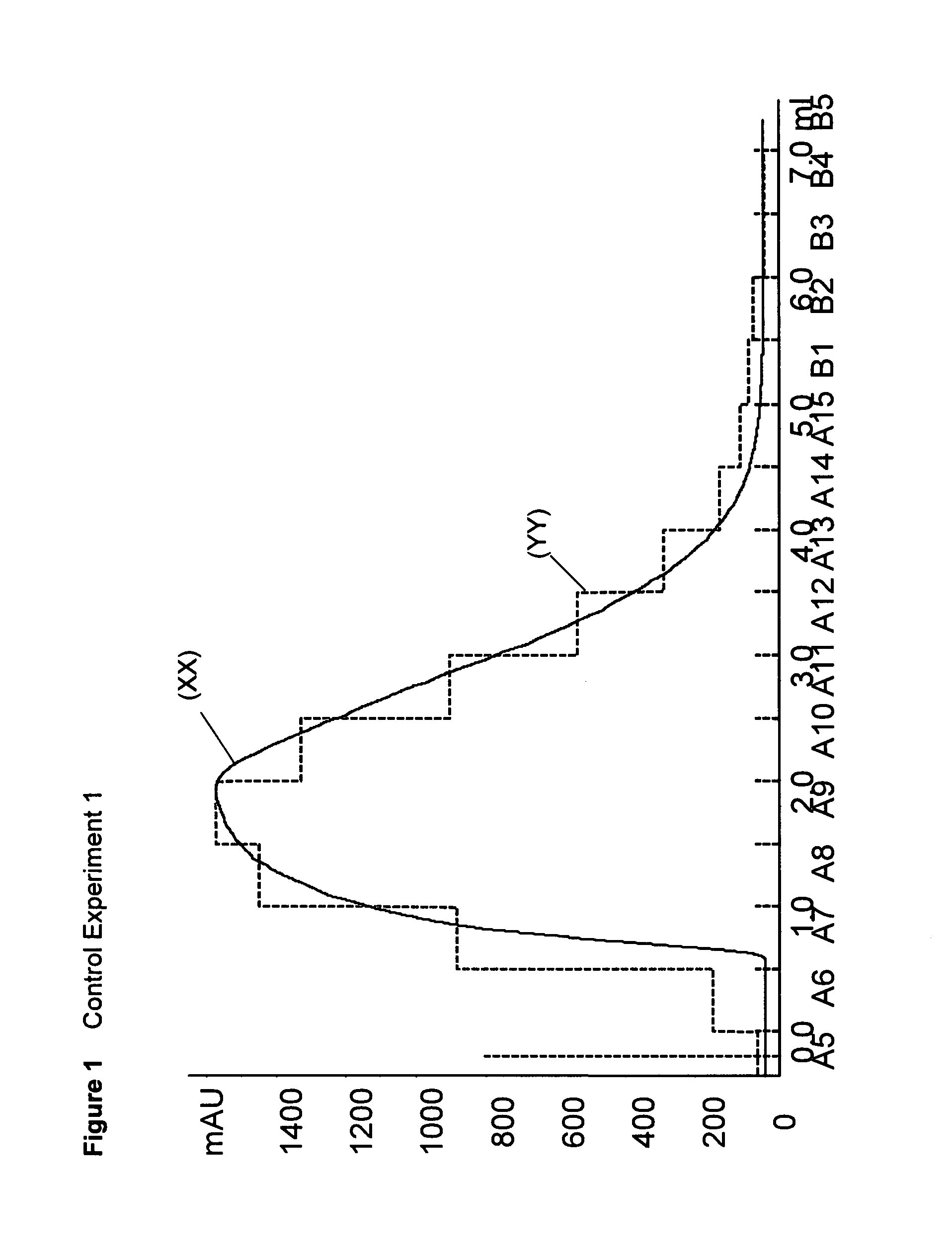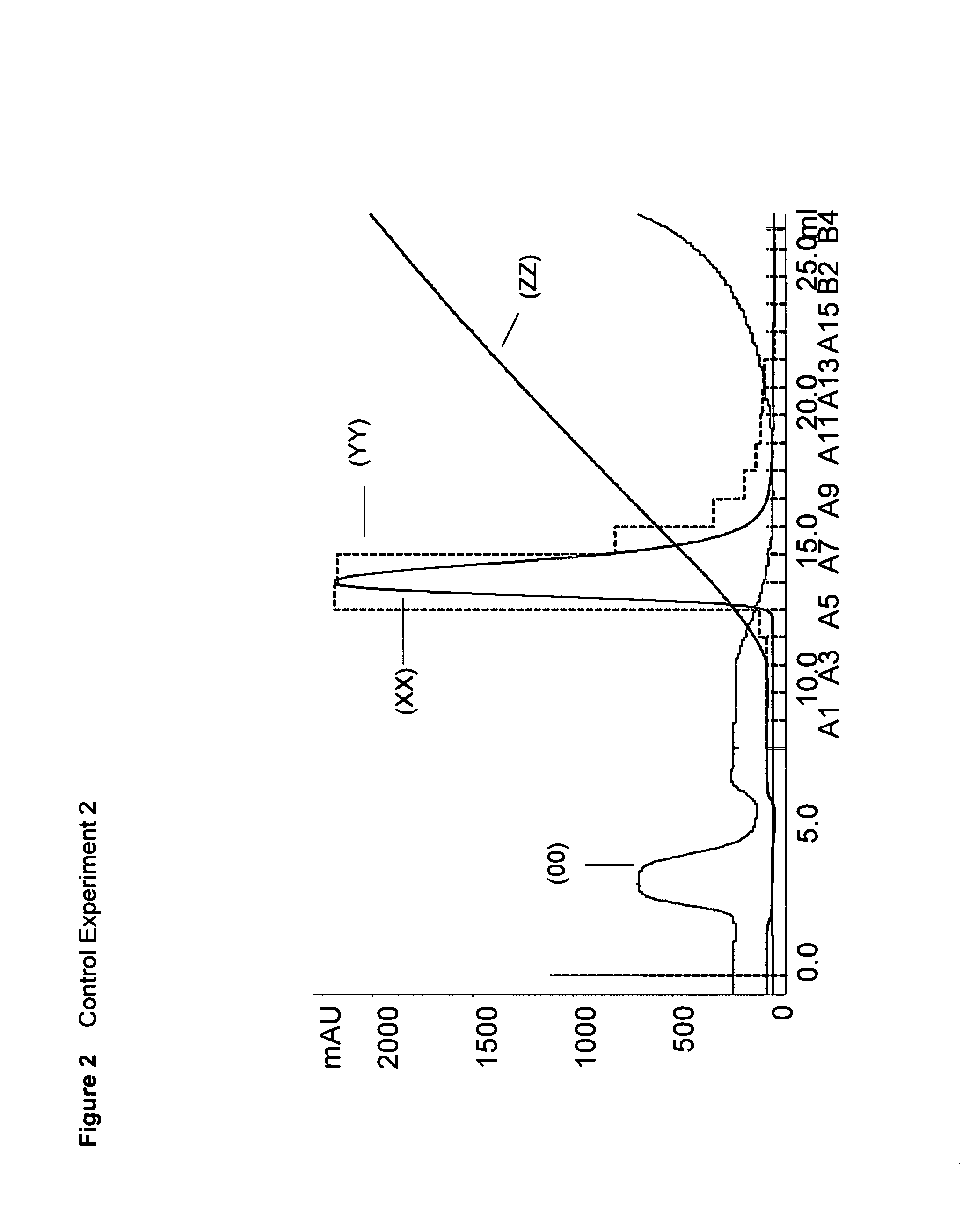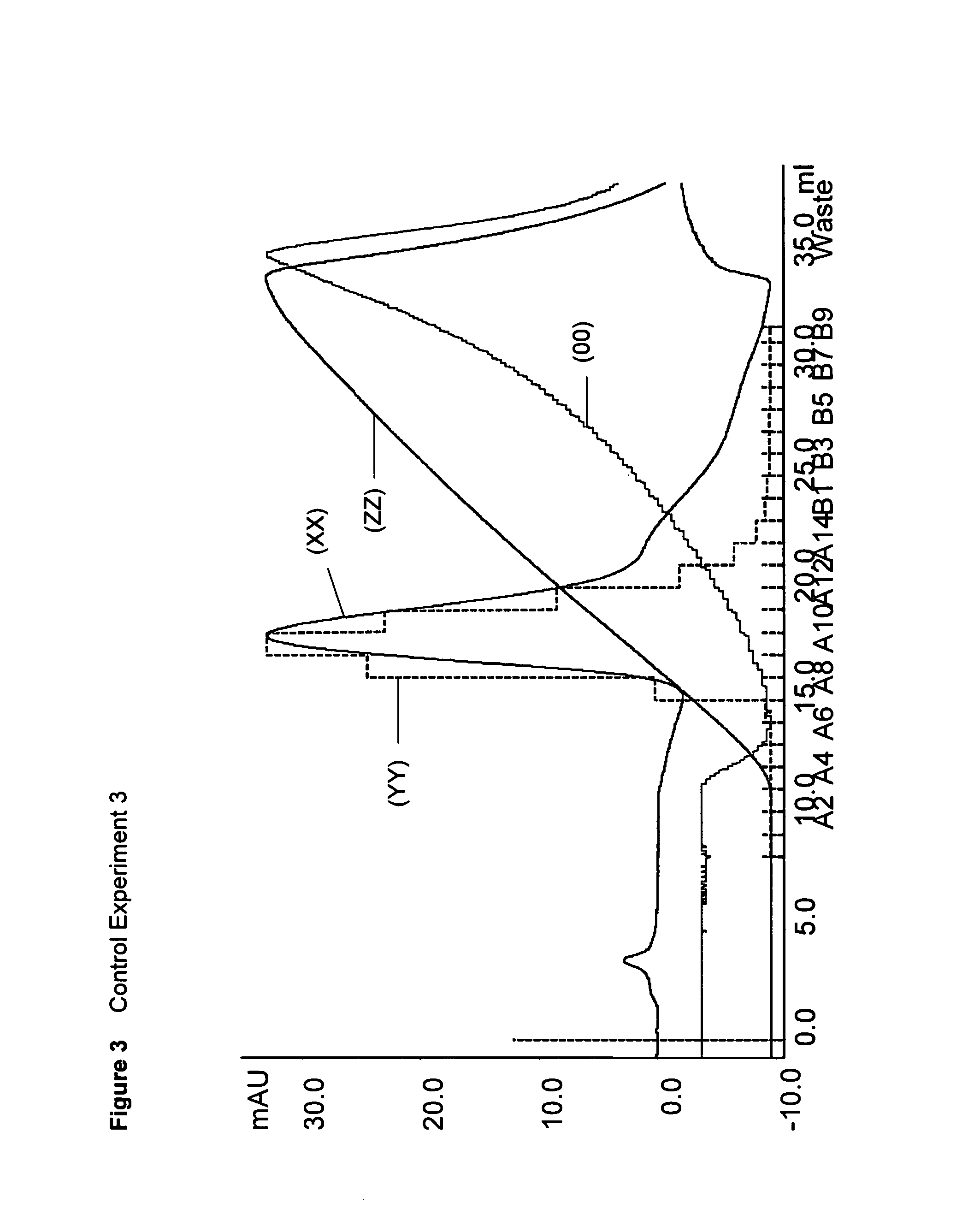Antibody purification
a technology of antibodies and purification methods, applied in chemical/physical processes, peptides, water/sewage treatment by ion exchange, etc., can solve the problems of impure products, time-consuming and laborious, and difficult to use the supernatant for other purposes
- Summary
- Abstract
- Description
- Claims
- Application Information
AI Technical Summary
Benefits of technology
Problems solved by technology
Method used
Image
Examples
example 1
Multi-Modal Chromatography Resin
[0075]The volumes of matrix given below refer to settled bed volume. The weights of matrix given in gram refer to suction (water pump) dry weight. It is understood that these matrices are still water solvated material. The stirring referred to below was by a suspended, motor-driven stirrer, since the use of magnet bar stirrer is prompt to damage the beads. The analysis of the functionality and the determination of the degree of allylation, epoxidation, or the degree of substitution of ion exchanger groups on the beads refer to conventional methods which are well known to the skilled person in this field. The methods below were eventually complemented by additional elementary analysis of the gels in particular for sulphur atom.
[0076]
TABLE 1Chemical structures of ligand prototypesLigand structurePrototype no.U1012054U790P73U790P65U790P71
Example 1(a)
Ligand Prototype U1012054
[0077]In this example, it is described how 3-amino-4(propylsulfonyl)thiophene-2-c...
examples 1 (
b)-(d)
[0083]In examples 1(b)-(d) below, the prototype ligands U790P65, U790P71 and U790P73 were prepared using D,L-homocysteine thiolactone as a scaffold, as described in WO 03 / 024588. In brief, after formation of the amide bound by reacting homocysteine thiolactone with acyl chlorides or anhydrides, the opening of the thiolactone ring was realised with basic hydrolysis and the resulting compound further coupled to an activated Sepharose™ 6FF (Amersham Biosciences).
Example 1(b)
Ligand Prototype U790P73
[0084]A solution of benzoyl chloride (8.7 ml, 75 mmol) in 30 ml DCM was added drop wise to a solution of D,L-homocysteine thiolactone (11.5 g, 75 mmol) and di-isopropylamine (DIPEA) (26 ml, 150 mmol) in dichloromethane (DCM, 120 ml) at 0° C. The mixture was stirred overnight at room temperature. The solvent was evaporated under vacuum and the reaction residue was extracted with ethyl acetate (300 ml). The organic phase was washed with aq. citric acid 10% (w / w, 200 ml), aq. K2CO3 10% (20...
example 1 (
d)
Ligand Prototype U790P71
[0086]A solution of phenyl glutaric anhydride (1.96 g, 10.3 mmol) in 4 ml DCM was added drop wise to a solution of D,L-homocysteine thiolactone (1.58 g, 10.3 mmol) and diisopropylamine (DIPEA) (3.58 ml, 20.6 mmol) in dichloromethane (DCM, 6 ml) at 0° C. The mixture was stirred overnight at room temperature. The solvent was evaporated under vacuum and the reaction residue was directly treated with a 5N sodium hydroxide solution (10 ml) and further stirred for 2 hours at room temperature. Brominated Sepharose™ 6 Fast Flow (10 ml) (Amersham Biosciences), obtained following a well known procedure starting from an allylated Sepharose™ 6 Fast Flow (250 μmol / ml), was mixed with 1.4 ml of the alkaline solution of the ligand described above and warmed up to 50° C. overnight. After reaction, the gel was filtered and washed with water (2×150 ml), ethanol (2×150 ml), acetic acid 0.2M (2×150 ml) and water (2×150 ml). The ionic capacity of the gels was then measured to b...
PUM
| Property | Measurement | Unit |
|---|---|---|
| pH | aaaaa | aaaaa |
| pH | aaaaa | aaaaa |
| pH | aaaaa | aaaaa |
Abstract
Description
Claims
Application Information
 Login to View More
Login to View More - R&D
- Intellectual Property
- Life Sciences
- Materials
- Tech Scout
- Unparalleled Data Quality
- Higher Quality Content
- 60% Fewer Hallucinations
Browse by: Latest US Patents, China's latest patents, Technical Efficacy Thesaurus, Application Domain, Technology Topic, Popular Technical Reports.
© 2025 PatSnap. All rights reserved.Legal|Privacy policy|Modern Slavery Act Transparency Statement|Sitemap|About US| Contact US: help@patsnap.com



